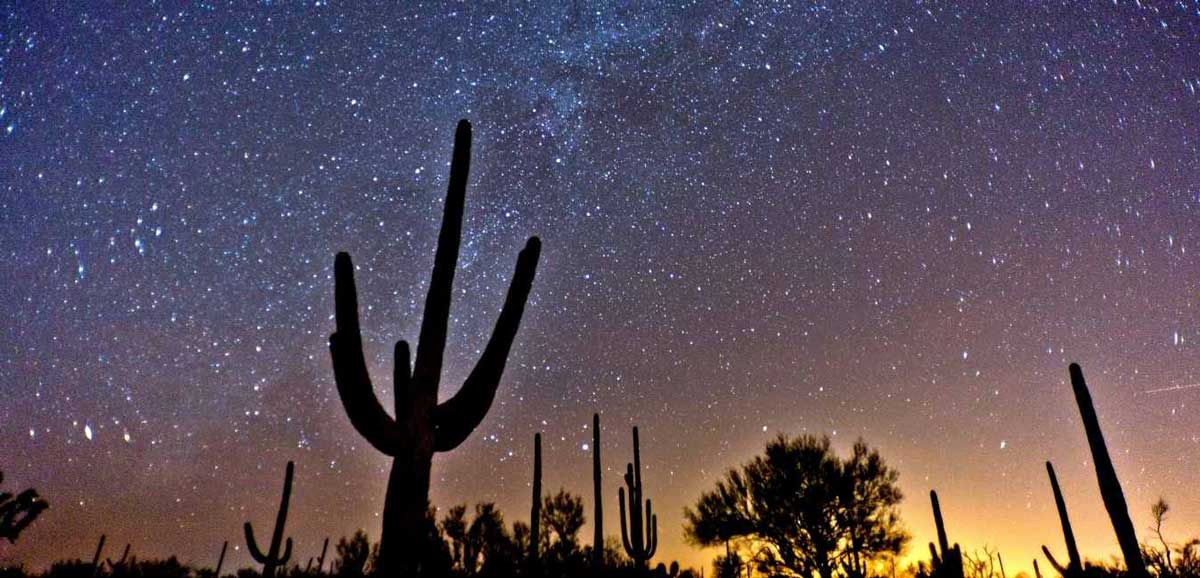
Editor’s Note: We’re all dreaming of travel ahead. Here’s some inspiration for future adventures. We share places, products and activities we recommend. If you make a purchase using a link on our site, we may earn a commission.
As developers of cities and communities gradually spread artificial light and atmospheric pollution throughout the world, our ability to see the universe is being stripped away.
Indeed, more than 80 percent of people on the planet cannot and may never see the Milky Way. Light pollution—glare, skyglow, light falling in unintended places, and clutter—is a product of industrial civilization.
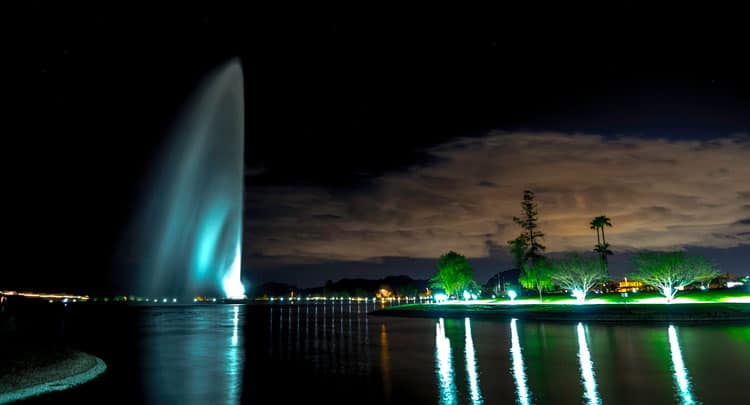
Not only does it impair our view of the cosmos like a sheet of gauze over our eyes, it disrupts the natural day-night pattern, shifts the delicate balance of our environment, and negatively affects our health.
Unbelievably, 99 percent of people in the U.S. and Europe live in light pollution.
“The true joy of a moonlit night is something we no longer understand. Only the men of old, when there were no lights, could understand the true joy of a moonlit night.”
― Yasunari Kawabata, Palm-of-the-Hand Stories
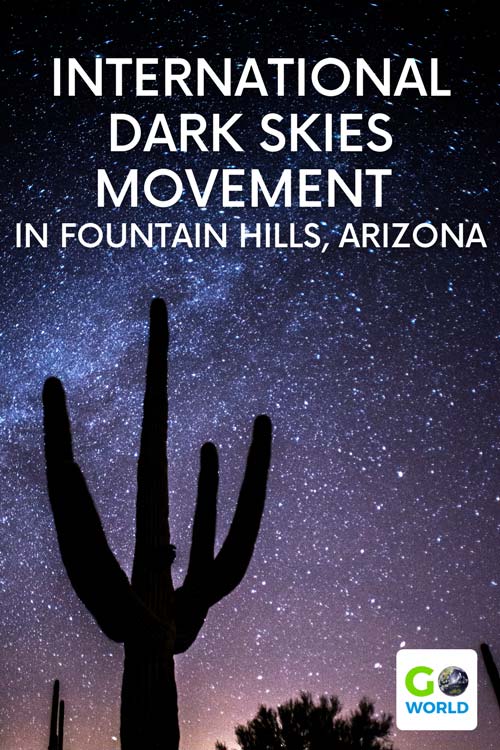
International Dark Sky Places
With these appalling statistics in mind, professional astronomer David Crawford and amateur stargazer Tim Hunter established the International Dark Sky Places Program in 2001 in Tucson, Arizona.
Its mission is to encourage communities, parks and protected areas around the world to preserve and protect night skies through responsible lighting policies and public education. Today there are close to 160 such places world-wide where you can look to the heavens in awe and marvel at what our ancestors saw eons ago.
“Today the most jaded city dweller can be unexpectedly moved upon encountering a clear night sky studded with thousands of twinkling stars,” wrote Carl Sagan in Pale Blue Dot: A Vision of the Human Future in Space. “When it happens to me after all these years it still takes my breath away.”
A rigorous two-year application process and annual followup reviews ensure these places continue their commitment to dark-sky preservation. Use of proper outdoor light fixtures and lightbulbs are key components to the certification.
There are five types of international designations:
- communities
- parks
- reserves (a dark core surrounded by a populated periphery)
- sanctuaries (most remote places)
- urban night sky places (sites surrounded by urban environs)
The program has stirred an interest in astrotourism, an ancillary attraction for these sites and an incentive to apply for certification.
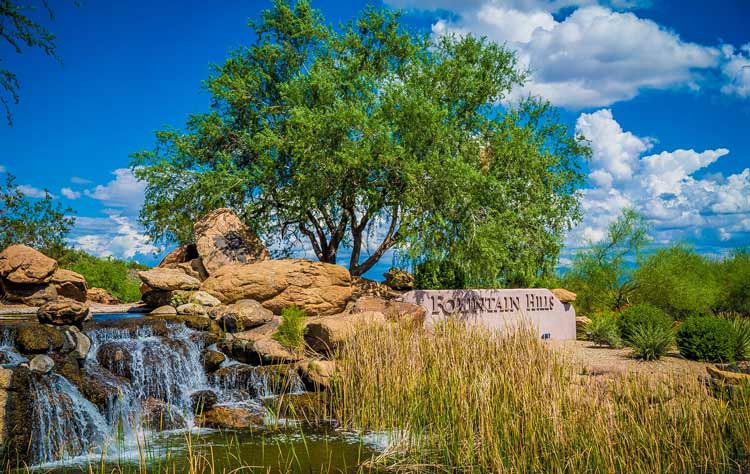
Fountain Hills Dark Sky
The small 50-year-old municipality of Fountain Hills in the ancient Lower Verde River Valley of Arizona was awarded the Dark Sky Designation for Communities in 2018, joining 28 other communities around the world as of this writing.
Remarkably, though Fountain Hills is so close to Phoenix—the fifth largest city in the U.S.—its dark skies remain protected by the McDowell Mountains to the west, the Salt River Pima-Maricopa Indian Community to the south, McDowell Mountain Regional Park to the north, and Tonto National Forest to the east.
This desert town of about 25,000 residents named for its famous fountain is a dark-sky oasis in the Valley of the Sun. Even the daytime sky can be as blue and clear as the water of the residents’ pools.
As you might imagine, the dark skies have spawned a local astronomy club, which has swelled to more than 500 stargazers. The local library in Fountain Hills has telescopes available for checkout, and the club meets outside there regularly with eyes to the skies.
“To confine our attention to terrestrial matters would be to limit the human spirit.”
—Stephen Hawking, astrophysicist
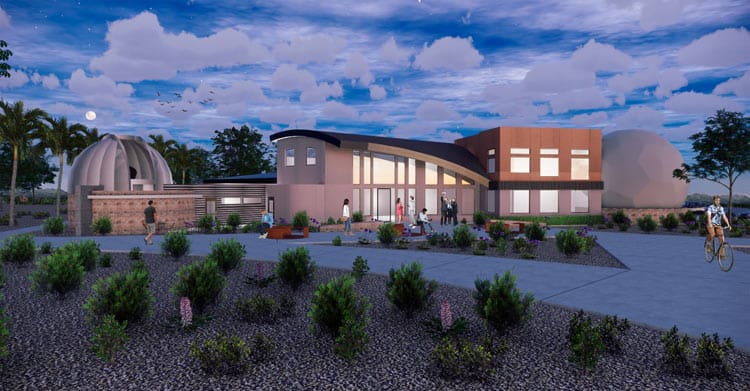
International Dark Sky Discovery Center
Because of its commitment to the Dark Sky program, plans are underway to build the International Dark Sky Discovery Center in Fountain Hills.
The non-profit facility will serve as the world’s centerpiece focusing on preserving dark skies as a portal to better understand astronomy, the space program, the universe and life on earth.
The 15,000 square-foot structure will house four major components:
- a domed observatory with a research-grade telescope
- a tilted domed planetarium with immersive digital technology
- a 150-seat theatre/lecture hall and a classroom with the latest projection technology
- an immersion zone with interactive and educational displays and a featured Dark Sky Immersion Experience.
The IDSDC will sit in the Town Center adjacent to the library, museum, community center and garden, and town hall, so tourists as well as locals can access it easily.
The educational and entertainment opportunities for all ages are endless and will make Fountain Hills an astrotourism destination.
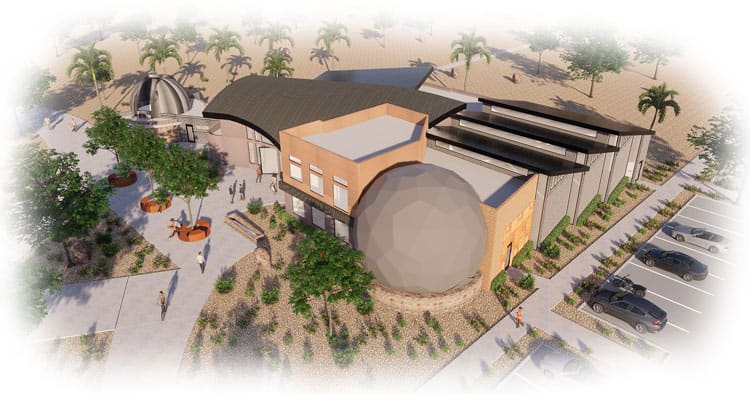
Best Places in Fountain Hills for Stargazing
McDowell Mountain Regional Park—From Fountain Park, take N. Saguaro Blvd to Fountain Hills Blvd. north, which turns into E. McDowell Mountain Rd. In about 10 minutes you’ll be under a pitch dark starry sky.
Sunridge Canyon—From Fountain Park, take El Lago to Palisades Blvd., then right on Golden Eagle Blvd. At Paradox Drive, turn right and drive to the dead end.
From this high point at more than 2500 feet, you’ll have a close, unobstructed view of the night skies. It will take about 15 minutes to drive there. One word of caution: when driving around Fountain Hills’ hilly neighborhoods, you will notice how dark the streets are due to Dark Sky lighting restrictions.
There are no streetlights, and lights on the homes are dark sky-friendly, with shields or covers that minimize glare while reducing light trespass and skyglow. So be extra mindful at intersections and stop signs.
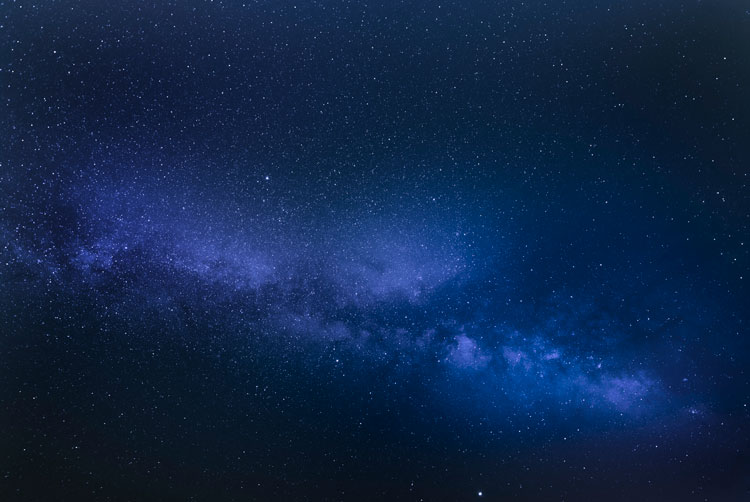
Book This Trip
Ready to experience the night sky as you’ve never seen before? Check out Kiwi for transportation packages and airline deals. Then, get extra prepared with Arizona hotel options, restaurant tips and insight on other local attractions worth visiting through Travelocity and TripAdvisor.
For more information: darksky.org, darkskycenter.org, experiencefountainhills.org
Author’s Bio: Claudia Carbone is an award-winning travel writer and member of the Society of American Travel Writers, North American Travel Journalists Assoc. and Denver Woman’s Press Club. Currently, her work is published in The Denver Post, Colorado Expression Magazine, London Sunday Telegraph’s Hotelegraph, GoWorldTravel.com, RealFoodTraveler.com, MtnTown Magazine and The Villager Newspaper. Her blog Sleepin’ Around covers any place you can sleep on vacation.
- The Low-Key Magic of Ghent, Belgium - April 22, 2024
- Discover the Hidden Charm of Extremadura in Spain - April 20, 2024
- Life of a Champion: Exploring the Muhammad Ali Center in Louisville - April 19, 2024

